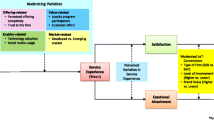Abstract
’I think ‘exceeds expectations’ is the most pitiful pair of words uttered in the English language. Our aspirations are too low. Think Cirque de Soleil, not Siegfried and Roy. Aim to put a shiver up your customers’ spines. That’s what you should even be trying to do with your call centers’, Tom Peters, Uber-Guru.
In a survey by Shaw and Ivens [1], 85% of business leaders said that differentiation by price, product and service is no longer a sustainable business strategy. 71% of these leaders also stated that they believed that ‘customer experience’ is the new battleground. The same survey found that customers found 44% of customer experiences to be bland and uneventful. Yet only 15% of companies are actually starting to engage customers on both an efficient and emotionally engaging manner. The implication is that companies which start to leverage the power of emotion in the purchasing decision-making process, and leverage that power to improve the customer experience, are likely to succeed in an increasingly commoditised market.
How do companies who are renowned for outstanding levels of customer experience, loyalty and advocacy achieve these levels? To find the answer to that question, this paper looks across organisations globally to find out how the best achieve effective affective customer experiences across all contact channels. A distinct pattern emerged.
Similar content being viewed by others
References
Shaw C and Ivens J: ’Building Great Customer Experiences’, Palgrave Macmillan (2002).
Smith S and Wheeler J: ’Managing the Customer Experience,’ FT Prentice Hall (2002).
Zuboff S and Maxmin J: ’The Support Economy: Why Corporations Are Failing Individuals and the Next Episode of Capitalism’, Allen Lane, The Penguin Press (2003).
Korczynski M: ’Call Centre Consumption and the Enchanting Myth of Customer Sovereignty’, in Holtgrewe U, Kerst C and Shire K (Eds): ‘Re-Organising Service Work: Call Centres in Germany and Britain’, pp 183–203, Ashgate (2002).
Hickman M and White C: ’Back to the Future’, The Henley Centre, (January 2004).
Nordström K and Ridderstrale J: ’Karaoke Capitalism: Managing for Mankind’, FT Prentice Hall (2004).
Hammond B R: ’Leveraging the Power of Emotion to Improve Service’, Achieve Global (2003).
Genesys: ’Global Consumer Survey Proves Impact of Customer Service Call Centers on Business Success and Brand’, (June 2003).
Minocha S, Millard N J and Dawson L: ’Integrating Customer Relationship Management Strategies in (B2C) eCommerce Environments’, Proceedings of INTERACT 2003, 9th IFIP TC13 International Conference on Human-Computer Interaction, IFIP (2003).
Reichheld F: ’Loyalty Rules!: How Leaders Build Lasting Relationships’, Harvard Business School Press (2003).
Heskett J L, Sasser W E and Schlesinger J L: ’The Service Profit Chain: How Leading Companies Link Profit and Growth to Loyalty, Satisfaction, and Value’, Free Press (1997).
Karasek R A: ’Job Demands, Job Decision Latitude and Mental Strain: Implication for Job Redesign’, Administrative Science Quarterly, 24, pp 258–307 (1979).
Thompson S C: ’Will it Hurt Less if I Control?: A Complex Answer to a Simple Question’, Psychological Bulletin, 90, 89–101 (1981).
Smith M J, Carayon P, Sanders K J, Lim S Y and LeGrande D: ’Employee Stress and Health Complaints in Jobs With and Without Electronic Performance Monitoring’, Applied Ergonomics, 23, No 1, pp 17–27 (1992).
Urquhart J: ’All Work & No Say… Ho Hum, Another Day: How to Captivate Your Workforce, Boost Morale and Increase Productivity’, Iconoclast Press (2004).
Seddon J: ’Freedom from Command and Control: A Better Way to Make the Work Work’, Vanguard Education Ltd (2003).
Fielding G: ’The £1 Billion Cost of Call Centre Attrition and How to Beat It’, Customer Management, 13, No 1, (January/February 2005).
Hewson Group: ’CRM Market Size and Trends Q4’, (2003).
Gartner, cited in Reed L: ’Go Vertical For The Right CRM Solution’, TMCNet.com (2001) — http://www.tmcnet.com/tmcnet/articles/0101jones.htm
Braune J and Graham-Rack N: ’Making or Breaking the Relationship Between the Consumer and the Brand’, Detica, CRM Conference, London Business School (January 2002).
Dull S F, Stephens T and Wolfe M T: ’How Much are Customer Relationship Management Capabilities Really Worth?’, Accenture Publication (2003).
About this article
Cite this article
Millard, N. Learning from the ‘wow’ factor — how to engage customers through the design of effective affective customer experiences. BT Technol J 24, 11–16 (2006). https://doi.org/10.1007/s10550-006-0016-y
Issue Date:
DOI: https://doi.org/10.1007/s10550-006-0016-y




